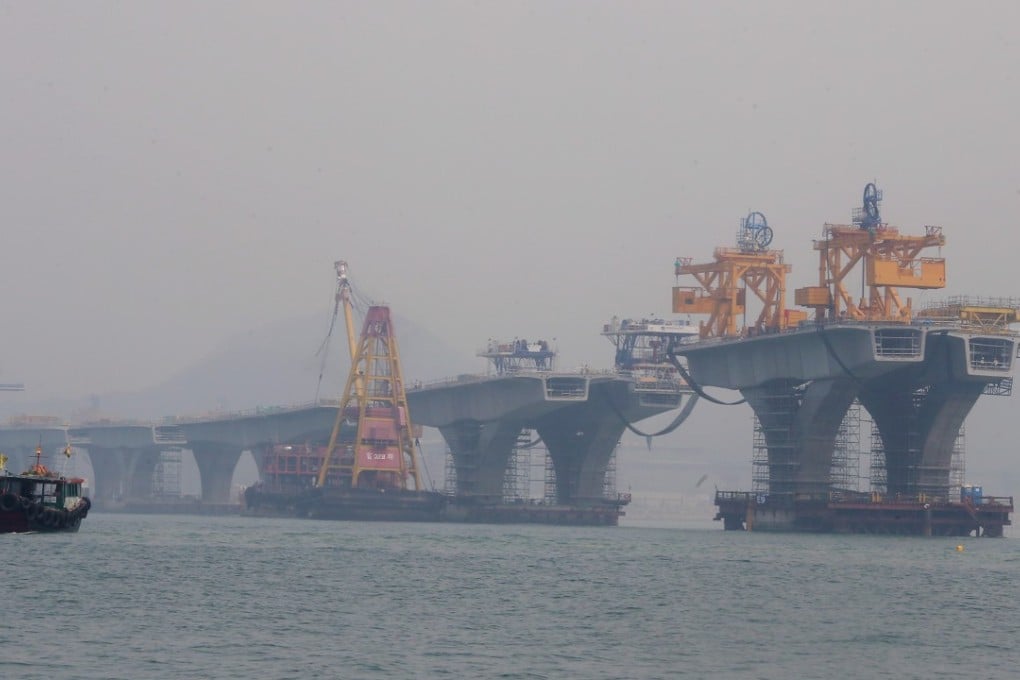Officers arrest 21 over faked concrete test results for Hong Kong-Zhuhai-Macau bridge project
The government says it is investigating possible safety implications, while an expert warns the structure might have to be rebuilt in worst-case scenario

Hong Kong’s anti-corruption agency has arrested 21 employees of a government contractor accused of faking concrete test reports for the multibillion-dollar bridge that will link the city to Zhuhai and Macau, raising serious safety concerns.
The government said it was investigating whether there were any safety implications for the Hong Kong-Zhuhai-Macau bridge, while an expert warned that it might even have to be rebuilt in the worst-case scenario.
The Independent Commission Against Corruption (ICAC) on Tuesday revealed that the operation codenamed “Greenfield” was launched a week ago, netting two senior executives, two senior site laboratory technicians, 12 site laboratory technicians and five laboratory assistants employed by the contractor for the Civil Engineering and Development Department (CEDD).
They were released on bail pending further inquiries.
Development minister Eric Ma Siu-cheung pledged that the government would examine the safety of the bridge construction.
“If the situation is not that serious, reviewing the existing construction is already enough. Otherwise we will take serious measures and follow up actions,” he said.